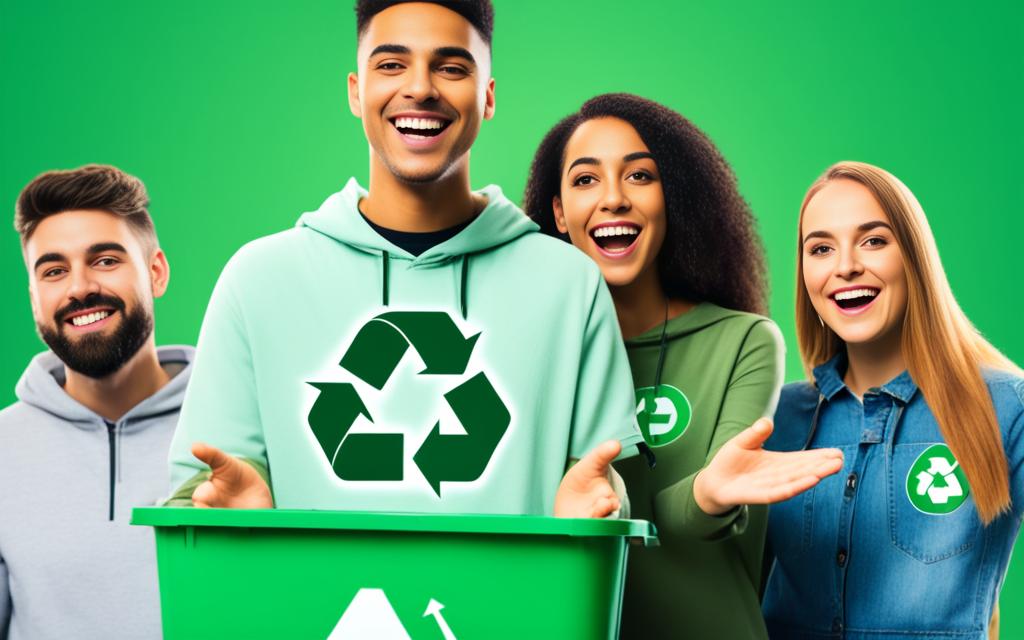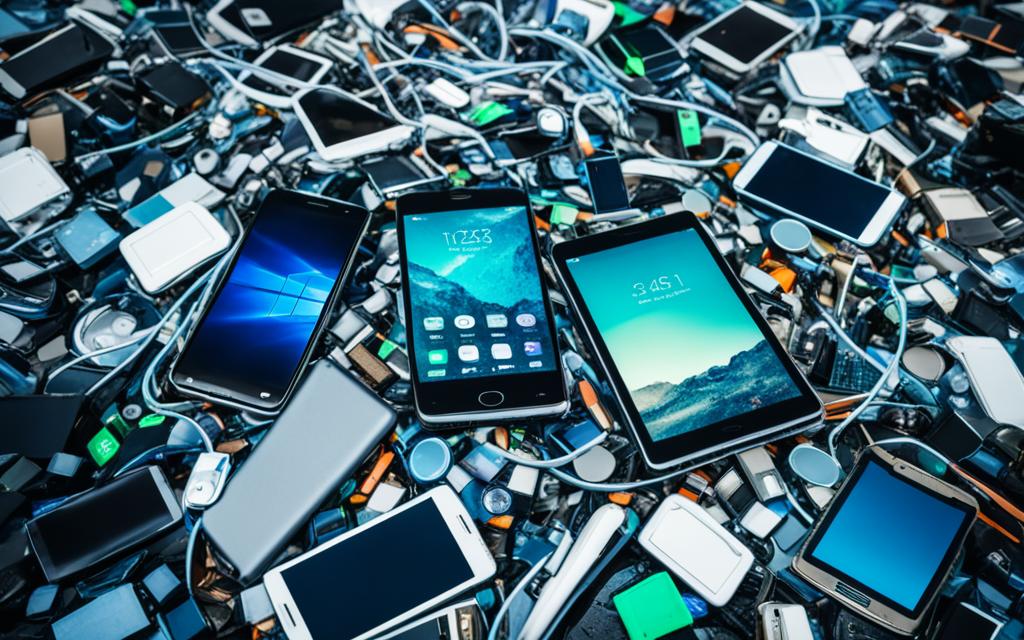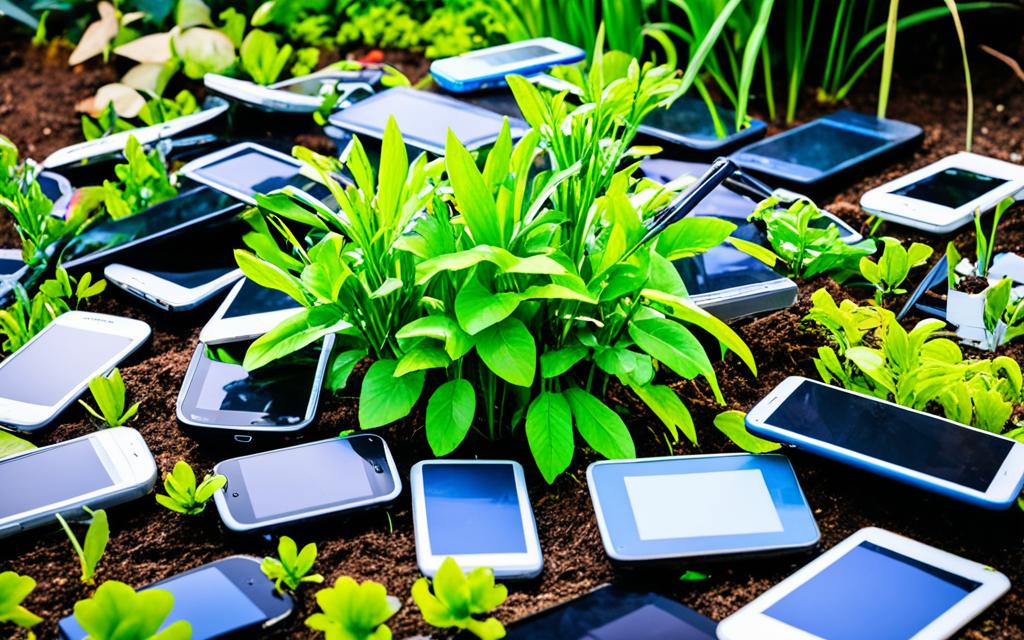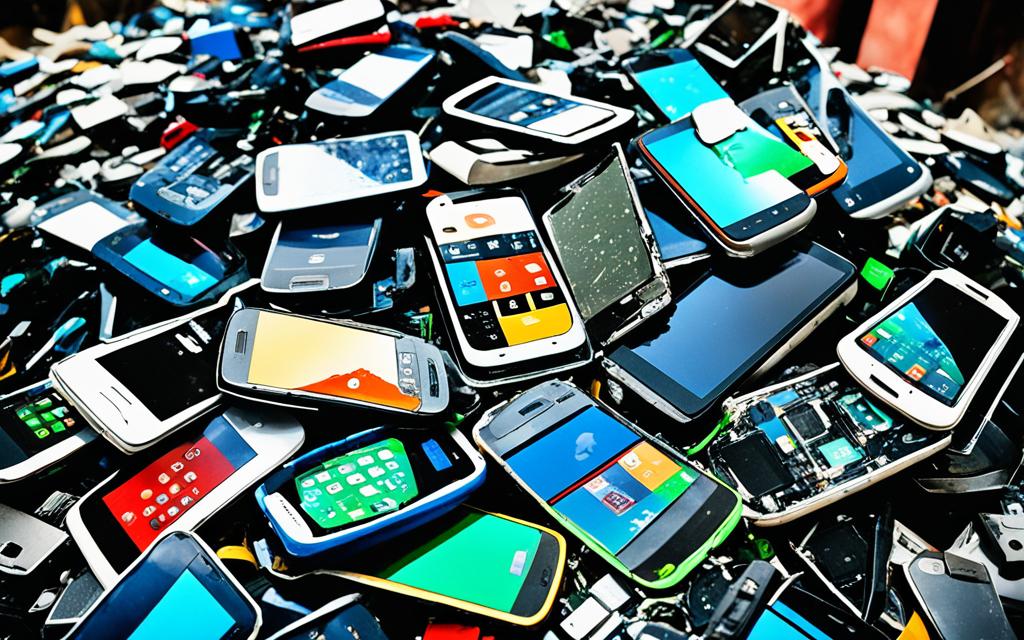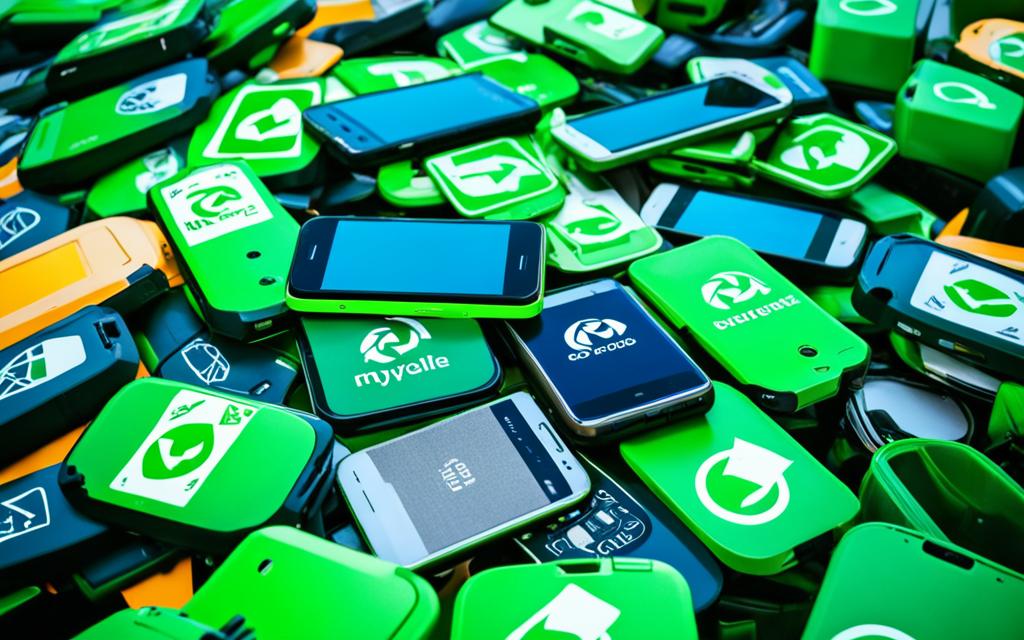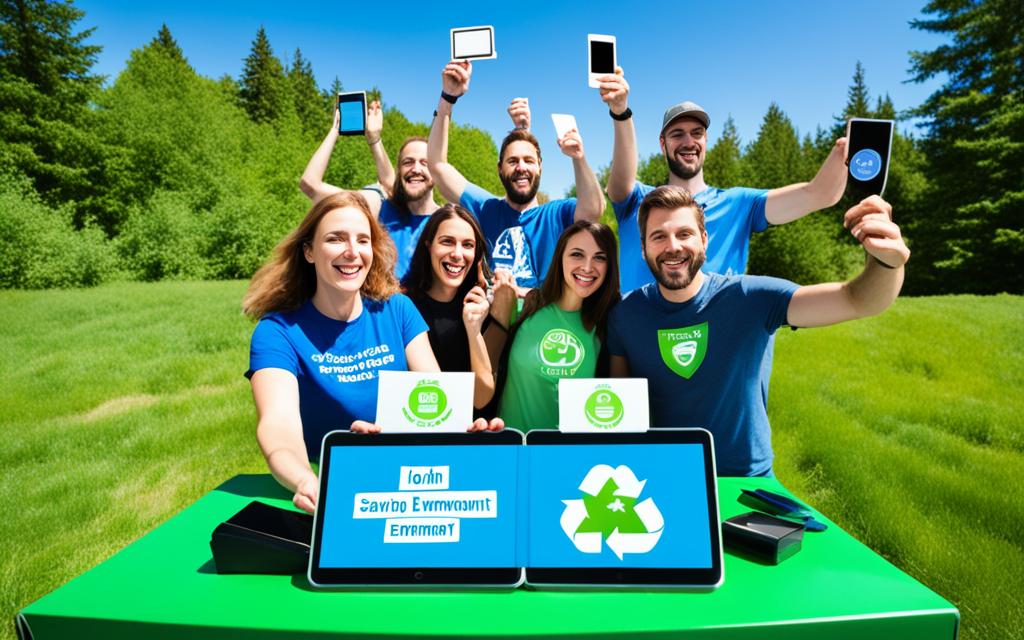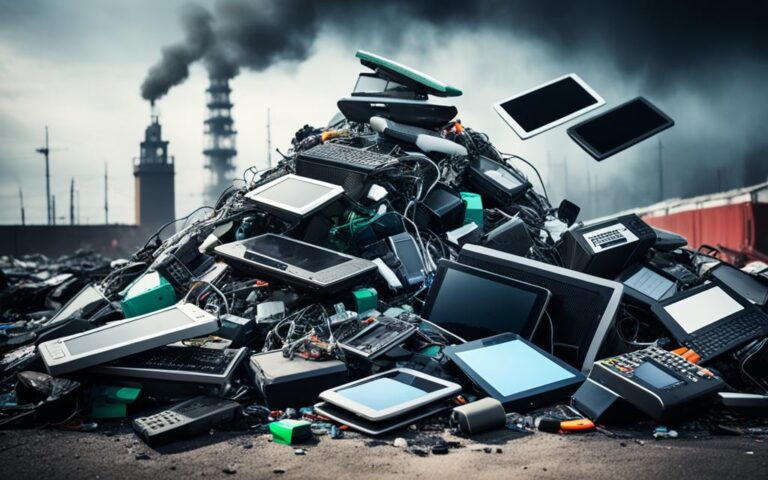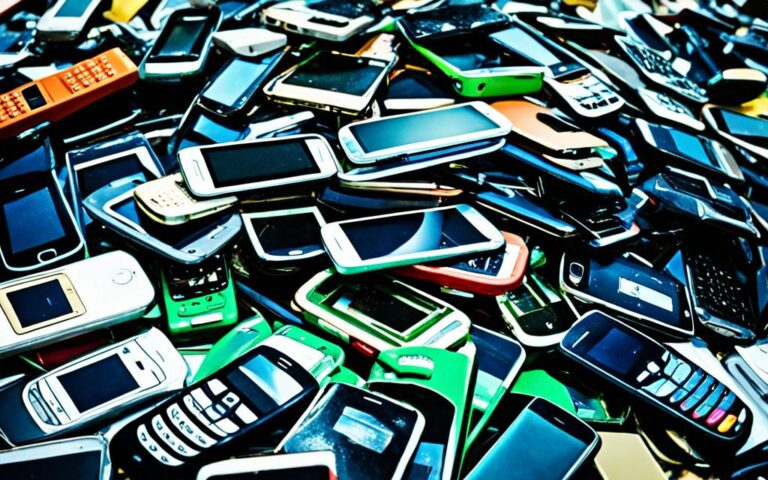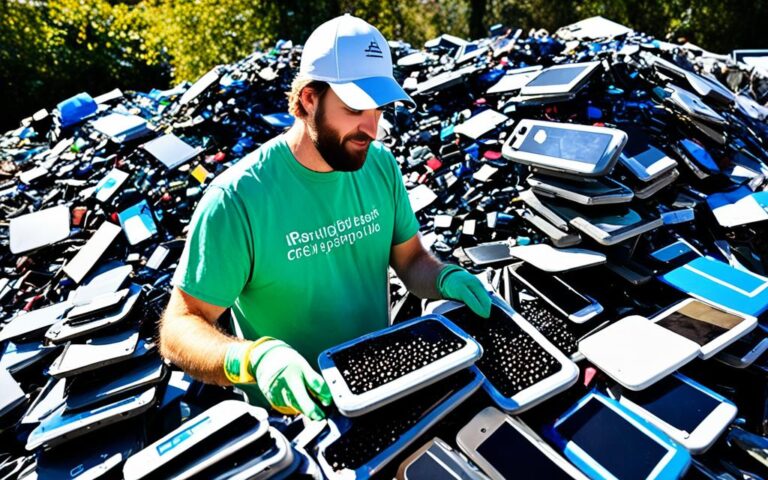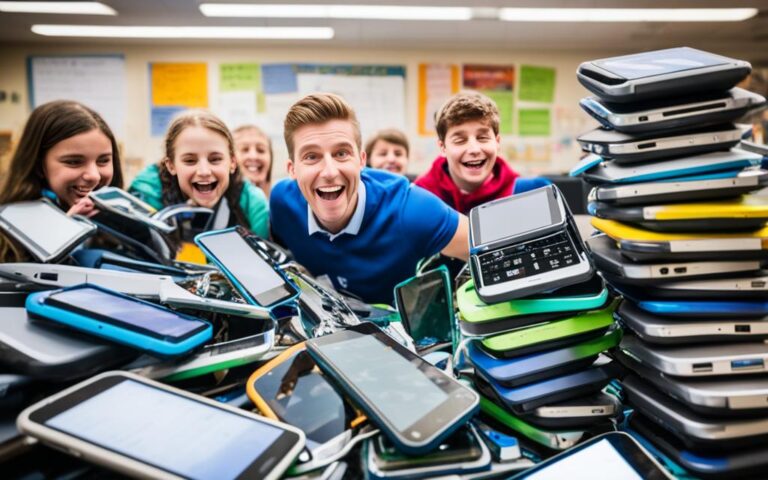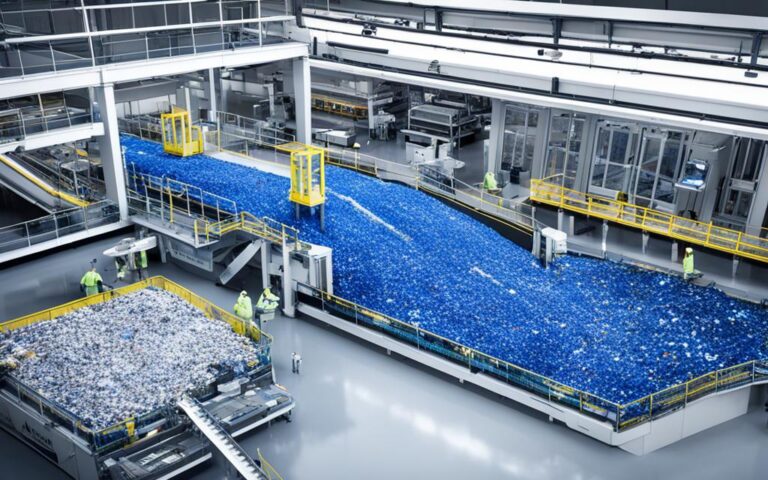Engaging Youth in the Movement for Phone and Tablet Recycling
Welcome to the Youth Recycling Movement, where young individuals like you are making a real difference in the world through phone and tablet recycling. In a world where technology is constantly evolving, it’s crucial that we take responsibility for the old devices we no longer use. By recycling our phones and tablets, we can help protect the environment and create a sustainable future for generations to come.
Electronic waste, including phones and tablets, has a significant impact on the environment. Toxic substances found in landfills are primarily generated by electronic waste, constituting 70% of harmful substances despite only accounting for 2% of landfill material. For example, devices like computer monitors and TVs contain up to 8 pounds of lead. To combat this issue, the Youth Recycling Movement aims to raise awareness about the environmental consequences of electronic waste and promote proper recycling through various initiatives.
The Environmental Impact of Electronic Waste
Electronic waste, such as old phones and tablets, poses a significant threat to the environment due to the presence of toxic substances. While electronic waste accounts for merely 2 percent of landfill material, it generates a staggering 70 percent of the harmful substances. For instance, devices like computer monitors and cathode ray tube televisions can contain up to 8 pounds of lead. The accumulation of these toxic substances in landfills poses severe risks to ecosystems and human health.
The adverse effects of electronic waste stem from the improper disposal and lack of recycling programs. When electronic devices end up in landfills, they release toxic chemicals, including lead, mercury, and cadmium, into the soil and water sources. These toxic substances can leach into groundwater, contaminate soil, and seep into rivers and lakes, posing serious threats to wildlife and ecosystems. Moreover, the toxic compounds present in electronic waste can also find their way into the food chain, potentially affecting human health.
The Youth Recycling Movement: Addressing the Issue
The Youth Recycling Movement recognizes the urgency to combat the environmental impact of electronic waste. By raising awareness about the hazards of improper disposal and promoting the proper recycling of phones and tablets, this movement endeavors to minimize the accumulation of toxic substances in landfills. Through educational campaigns, community initiatives, and sustainable practices, the Youth Recycling Movement empowers young individuals to become catalysts for change in their communities and beyond.
“Our planet’s future depends on our actions today. By recycling electronic devices, we can reduce the environmental impact of toxic substances and pave the way for a sustainable future.”
The Youth Recycling Movement encourages young people to actively participate in recycling programs, properly disposing of their old phones and tablets through designated recycling centers and collection events. By diverting electronic waste from landfills and directing it to certified recycling facilities, the movement aims to mitigate the release of toxic substances into the environment.
| Impact of Electronic Waste | Contribution to Toxic Substances |
|---|---|
| Only 2% of landfill material | Generates 70% of harmful substances |
| Computer monitors and cathode ray tube TVs | Can contain up to 8 pounds of lead |
The Power of Youth Civic Action
The Youth Recycling Movement empowers young individuals to develop their civic-action skills and take charge of creating change in their communities. One inspiring example comes from Arlington, Virginia, where middle school students discovered discarded tech trash in a local stream. Determined to address this issue, they took it upon themselves to design a community recycling program and implement a curbside electronics-recycling project called “We’ll Bring It to You.” With guidance from their teacher and support from the community, these motivated students successfully executed their recycling initiatives, showcasing the power of youth in making a difference.
By actively engaging in civic action, young individuals enhance their skills and gain valuable experience in addressing environmental challenges. Through the implementation of their community recycling program and curbside electronics-recycling project, these students not only contributed to a cleaner environment but also developed leadership, teamwork, and problem-solving abilities.
This hands-on experience of creating and executing sustainable initiatives instills a sense of responsibility and environmental consciousness in young minds. It empowers them to become advocates for change and inspires others to follow suit.
“The actions of these youth not only demonstrate their commitment to the environment but also serve as an inspiration for others. They have shown that age is not a limitation when it comes to making a positive impact in our communities.” – Environmental Activist
The success of initiatives like the community recycling program and the curbside electronics-recycling project illustrates the significant role that youth can play in driving positive change. Their dedication and determination serve as a powerful example for other young individuals and encourage them to take action in their own communities.
Through civic-action skills, young people have the ability to influence and transform their surroundings. By engaging in community recycling programs and spearheading innovative projects, they promote sustainability and create a lasting impact for generations to come.
Steps to Engage Youth in Recycling Projects
Engaging youth in recycling projects involves several important steps. By following these key strategies, you can empower young individuals to make a meaningful contribution to the environment and create a greener future.
Forming a Group
The first step is to form a group of interested students who are passionate about recycling. Encourage them to come together and share their ideas and enthusiasm for environmental sustainability. It’s essential to obtain support from parents, guardians, and administrators to ensure the success of the recycling project.
Doing Research
To effectively engage youth in recycling projects, it’s crucial to conduct thorough research. Gain an understanding of existing recycling opportunities in your community and assess the specific needs and challenges related to electronic waste management. This research will provide valuable insights that can guide your recycling initiatives.
Suggesting a Solution
Based on your research findings, suggest a viable solution for tackling electronic waste. Consider proposing a curbside pickup service for electronic devices or implementing a community recycling program. Your solution should address the unique needs of your community and offer a convenient and accessible way for people to recycle their old phones and tablets.
Pitching the Project
Create a compelling pitch to present to relevant stakeholders, such as local government officials, school administrators, and community leaders. Clearly articulate the benefits of the recycling project and how it aligns with sustainability goals. Engage your audience and inspire them to support and participate in the initiative.
Coordinating and Collecting
Once you have obtained support and buy-in from stakeholders, it’s time to coordinate and collect electronic devices for recycling. Launch community outreach efforts to spread the word about the recycling project and encourage participation. Set up collection points or organize collection drives to ensure a seamless process for individuals to dispose of their old phones and tablets responsibly.
Sharing Results and Recommendations
After implementing the recycling project, document the results and outcomes. Measure the impact of your efforts by quantifying the number of devices collected and the amount of electronic waste diverted from landfills. Share these results with the community and stakeholders, along with any recommendations for improvement or future recycling initiatives.
By following these steps and involving youth in recycling projects, we can foster a sense of environmental responsibility and empower the next generation to create positive change. Together, let’s work towards a sustainable future.
The Role of Educational Innovation in Sustainability
Educational innovation is a powerful tool that can drive sustainability efforts and foster student-led change. By embracing innovative strategies and techniques, educators have the opportunity to enhance students’ learning experiences while inspiring them to make a positive impact on the environment. Through the integration of new technologies and research, teachers and students can develop more effective learning strategies and create engaging classroom environments. As the world transitions to a knowledge-based economy, educational innovation becomes increasingly important in equipping students with the skills and knowledge needed to build a greener future.
One of the key ways in which educational innovation promotes sustainability is by encouraging students to take an active role in addressing environmental challenges. By involving students in real-world projects and initiatives, educators empower them to become agents of change in their communities. This hands-on approach not only deepens students’ understanding of sustainability but also cultivates essential skills such as critical thinking, problem-solving, and collaboration.
Transforming Learning Environments
Educational innovation transforms traditional learning environments into dynamic spaces that foster creativity, exploration, and critical thinking. By incorporating innovative teaching methods, such as project-based learning and inquiry-based learning, educators create opportunities for students to connect with real-world issues and develop solutions. This student-centered approach encourages active engagement and empowers students to apply their knowledge and skills in meaningful ways.
Furthermore, educational innovation supports interdisciplinary learning, bridging the gap between subject areas and encouraging students to approach sustainability challenges from multiple perspectives. Through cross-curricular collaboration and integration, students develop a holistic understanding of environmental issues and the interconnectedness of various disciplines.
“Educational innovation is not only about adopting new technologies but also about embracing new pedagogical approaches that empower students to become active participants in their own learning and agents of change in society.” – Dr. Emma Thompson, Education Advocate
Effective Learning Strategies for Sustainability
Effective learning strategies tailored to sustainability education play a crucial role in engaging students and promoting lasting change. By incorporating experiential learning, educators create opportunities for students to apply their knowledge in real-world contexts, fostering a deeper understanding of the environmental impact of human actions.
The use of technology tools and platforms can further enhance sustainability education by providing interactive and immersive learning experiences. Virtual reality simulations, digital storytelling, and online collaborative platforms enable students to explore environmental issues, develop empathy, and co-create innovative solutions.
Table: Effective Learning Strategies for Sustainability
| Learning Strategy | Description |
|---|---|
| Project-Based Learning | Students collaborate on projects that address real-world sustainability challenges, fostering critical thinking and problem-solving skills. |
| Inquiry-Based Learning | Students explore sustainability topics through inquiry and investigation, developing their curiosity and research skills. |
| Experiential Learning | Students engage in hands-on experiences that connect them with the natural environment, fostering a sense of stewardship and empathy. |
| Technology-Enhanced Learning | Utilizing virtual reality, digital storytelling, and online collaboration platforms to provide interactive and immersive sustainability learning experiences. |
| Interdisciplinary Approaches | Integrating various disciplines, such as science, geography, and social studies, to foster a holistic understanding of sustainability. |
These effective learning strategies empower students to become critical thinkers, problem solvers, and responsible global citizens, ready to tackle the complex sustainability challenges of the future.
Conclusion
The Youth Recycling Movement is a powerful force driving environmental sustainability and fostering a sustainable future. By raising awareness about the detrimental impact of electronic waste on our planet and providing opportunities for young people to engage in phone and tablet recycling initiatives, this movement is shaping a generation of environmentally conscious individuals.
Through their civic action and determination, young people are actively contributing to positive change in their communities and beyond. By participating in community recycling programs and curbside electronics-recycling projects, they are not only reducing electronic waste but also inspiring others to take part in this vital movement.
Furthermore, the involvement of young individuals in phone and tablet recycling showcases the potential of educational innovation. By integrating innovative learning strategies and embracing new technologies, educators are empowering students to become agents of change. These students are not just learning about the importance of environmental sustainability; they are actively applying their knowledge and skills to make a tangible difference.
The Youth Recycling Movement is a testament to the power of collective action and the impact that determined individuals can make. Through their commitment and dedication, young people are leading the way towards a more sustainable future. By joining hands with them, we can create a world where electronic waste is minimized, resources are conserved, and our planet thrives for generations to come.
FAQ
What is the Youth Recycling Movement?
The Youth Recycling Movement is an initiative that inspires young individuals to take action and make a difference in the world by recycling their old phones and tablets. It aims to educate and empower youth to understand the environmental impact of electronic waste and actively participate in recycling programs.
What is the environmental impact of electronic waste?
Electronic waste, such as old phones and tablets, is a significant contributor to the toxic substances found in landfills. Despite only accounting for 2 percent of landfill material, electronic waste generates 70 percent of harmful substances. For example, devices like computer monitors and TVs with cathode ray tubes can contain up to 8 pounds of lead.
How does the Youth Recycling Movement address the issue of electronic waste?
The Youth Recycling Movement raises awareness about the environmental impact of electronic waste and promotes the proper recycling of electronic devices. Through community recycling programs and curbside electronics recycling projects, young people are leading the way in promoting sustainability and creating a greener future.
Can you provide an example of youth civic action in recycling initiatives?
In Arlington, Virginia, middle school students discovered discarded tech trash in a local stream and decided to tackle the problem. They designed an award-winning community recycling program and developed a curbside electronics-recycling project known as “We’ll Bring It to You.” With guidance from their teacher and support from the community, these students successfully implemented their recycling initiatives, showcasing the power of youth in making a difference.
What are the steps to engage youth in recycling projects?
The steps to engage youth in recycling projects include forming a group of interested students and obtaining support from parents and administrators. Then, conducting research to understand existing recycling opportunities and assess the community’s needs. Next, suggesting a solution, such as curbside pickup, and creating a compelling pitch to present to relevant stakeholders. Coordinating and collecting electronic devices through community outreach efforts is also important. Finally, documenting the results of the project and making recommendations for future recycling initiatives.
What role does educational innovation play in sustainability?
Educational innovation plays a crucial role in promoting sustainability and engaging youth in recycling efforts. By adopting innovative strategies and techniques, educators can enhance student learning experiences and inspire student-led change. Through the integration of new technologies and research, teachers and students can develop more effective learning strategies and create engaging classroom environments.
How does the Youth Recycling Movement contribute to a sustainable future?
The Youth Recycling Movement empowers young individuals to actively participate in phone and tablet recycling for a sustainable future. By raising awareness about the environmental impact of electronic waste and providing opportunities for youth to get involved in recycling initiatives, this movement is creating a generation of environmentally conscious individuals. Through their civic action and educational innovation, young people are playing a vital role in promoting sustainability and driving positive change in their communities and beyond.

